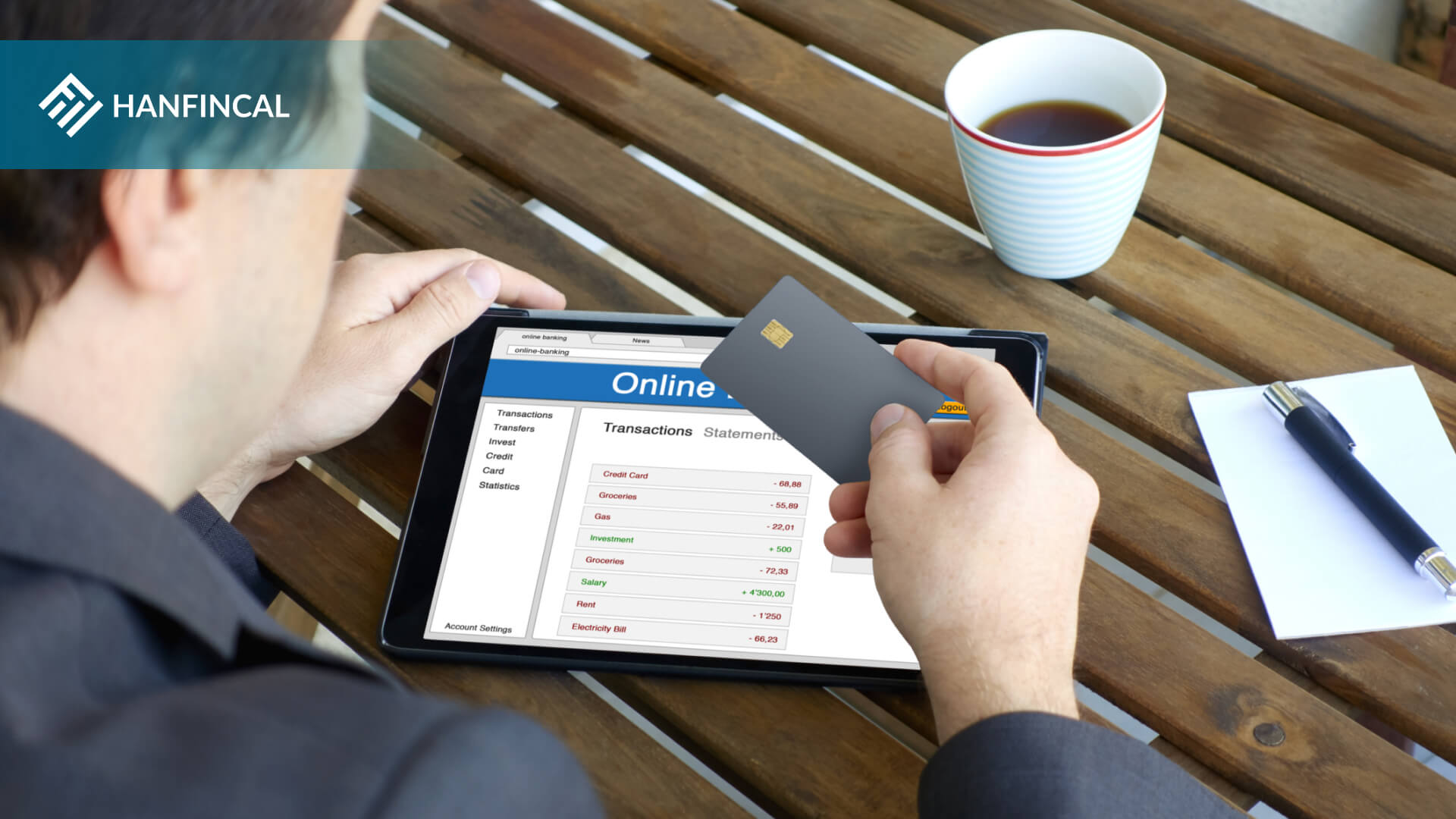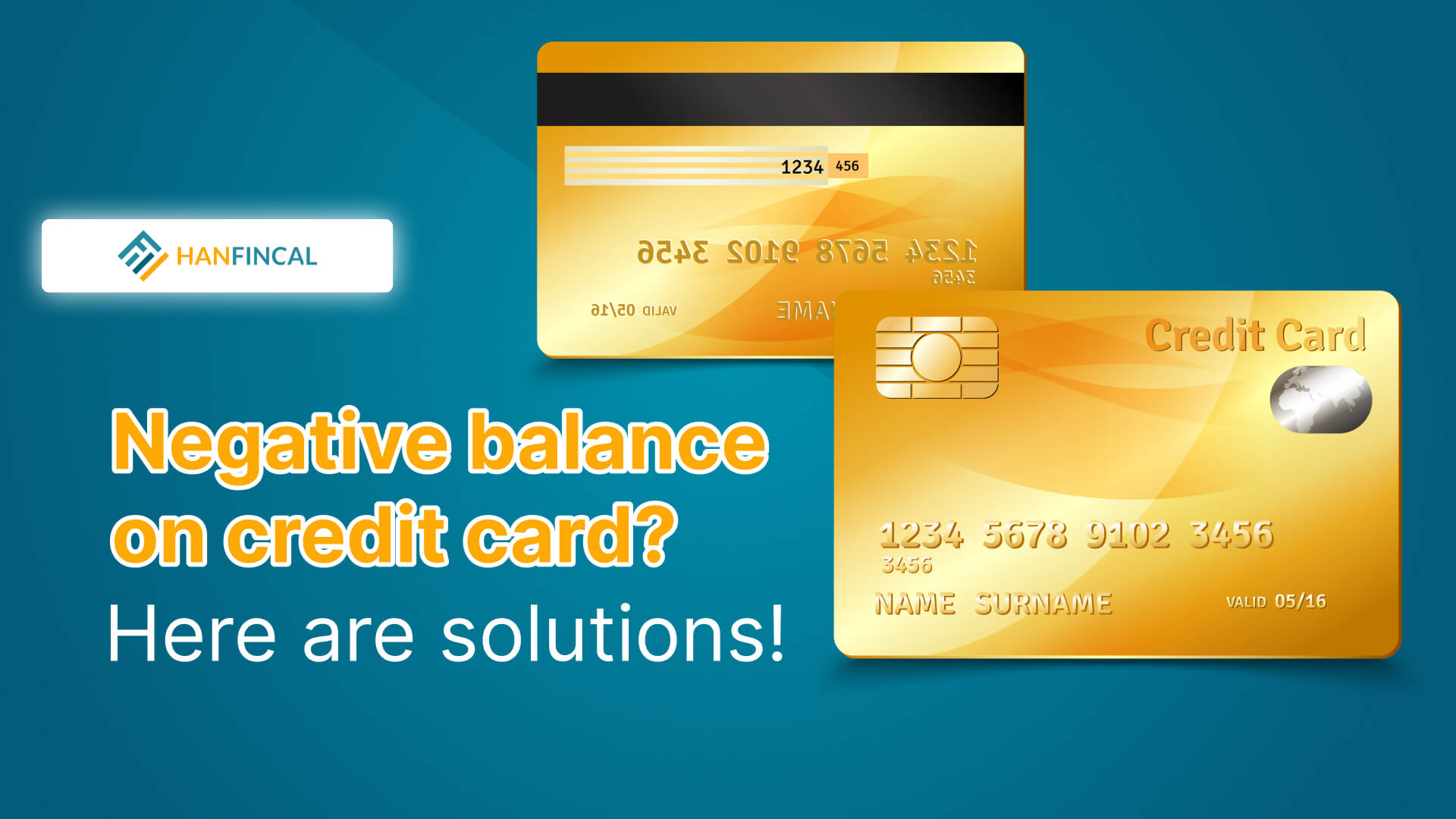The negative balance on credit card is uncommon, so why are they occurring, and does this have a positive impact? Many factors can cause a negative credit card balance, but it’s not a bad situation to be in. So, what is the nature of this problem, and what should you do in this situation? Hanfincal will assist you in locating all of the answers.
1. What is negative balance on credit card?
A negative balance on credit card means that the credit card issuer owes you money, not the other way around. This extra credit is denoted by a minus sign in front of the dollar amount. Another way to look at it is that you paid more than the total balance due and are entitled to a credit to your account.
2. Reasons why you get a negative balance on a credit card

Reasons why you get a negative balance on your credit card
A negative credit card balance can occur for a variety of causes, some of the most common are given below:
2.1. Canceled fees
Before making any payment, please keep in mind that you should carefully review all the benefits and promotions. Maybe you get some promotions one month but don’t pay attention to them and pay the amount you should have been exempted from. For example, if you have interest, annual, or late fees waived but have already paid that amount down, you may end up with a negative balance.
2.2. Cashed out too many rewards
The second reason that leads to a negative balance on your credit card can be some rewards you usually get every month. Some credit cards offer bonus rewards or statement credits based on specific purchases. If a consumer pays off the balance each month, a later-applied reward or statement credit may appear as a negative balance on a subsequent report.
2.3. Earned a statement credit
Some credit cards offer welcome bonuses or annual credits applied to your account after qualifying purchases. After that, you may be able to redeem credit card rewards for a statement credit. This results in a credit card balance that is negative.
For instance, perhaps your card provides a $100 airline fee credit. You pay off your balance but receive a statement credit to reimburse you for eligible expenses.
2.4. Fraudulent charge reversal
If you lose your cards or someone steals them, your financial health also still be protected. If your credit card was used without your permission, the amount charged is not your financial responsibility under the cardholders’ benefits protection. When fraud is discovered, the credit card company will reverse the transaction, resulting in a negative balance.
2.5. Overpaid your credit card bill
It’s easy to give the wrong amount – or make math errors – and overpay if you handly enter a payment amount and accidentally pay more than the amount due. If you set up autopay but make a manual payment around the time it withdraws, you may end up paying twice. If you inadvertently overpay your statement balance, the overpayment will be accepted by the credit card company and your balance will be negative.
2.6. Returned purchase refund
If you dispute a charge or return a purchase you have already paid for, you may qualify for a refund from the merchant or your card issuer, which will cancel your balance. For example, suppose you purchased a refrigerator, but it did not function properly, so you decided to return it. You request a refund and get a statement credit. You end up with a negative balance because you already paid for the refrigerator on your bill.
3. What can you do with a negative balance on a credit card?

What can you do with a negative balance on a credit card?
3.1. Contact customer service
A negative balance can occur for various reasons, and it may come from your card issuer error. If you’re not sure why you’re receiving this negative balance, contact the credit card company’s customer service for an explanation.
3.2. Just wait it out
If you are not concerned about the current negative balance in your account, you can do nothing and wait for your credit card issuer to process the transaction. Credit card companies do not keep money from you that you do not owe them.
Even if you do not request a refund, your issuer is required by law to make a good-faith effort to return the money to you if the negative balance remains unpaid for six months. If you’ve moved since and haven’t updated your address, you should do so online or over the phone to smoothly process the refund.
3.3. Make a purchase
This is a widely used workaround. Simply use your credit card for transactions, and you can apply the negative balance to the charges automatically. Remember that you have a short-term credit for whatever the negative balance is. For example, if you have a $50 negative balance, you won’t be able to add to your new balance until you’ve spent more than $50. You are not required to spend a negative balance immediately or on the whole. You can continue to spend as usual until your balance returns to zero.
3.4. Request a credit balance refund
Call the credit card company’s customer service team on the other side of the card and request a refund to get your money faster. Some issuers will provide you with various refund options, such as a check, money order, cash payment, or a direct deposit into your bank account.
Credit card companies have seven business days to send the funds to the cardholder. If you choose to receive it by mail, the post office will take several days to deliver it to you.
Sometimes, you may want a paper trail to support your refund request. In these cases, you can send a written request for a refund to the credit card issuers via certified mail.
4. Does a negative credit card balance affect your credit score?
Negative balances on your credit card account do not affect your credit score. This is because credit scoring models treat negative balances as if they were zero. However, it can temporarily limit how much you can spend on your card — but it does not increase your credit limit.
Because a negative balance does not impact your payment history, the issuer will not report it to the three major credit bureaus so that no lenders know the negative balance on your cards.
Negative balances are not taken into account when calculating scores. On the other hand, a negative balance indicates that your credit utilization, or the percentage of available credit relative to your credit limit, is 0% for that card. Credit utilization is one of the most important credit-scoring factors, and the lower your balance, the better your utilization—so a negative balance works in this case.
By the way, if you want to improve your credit score for free, this is the best solution right now. Obtain free credit scores from reputable online sources. Credit Monitoring is one of the most important centers we recommend. Obtain it directly here.
CLICK TO GET CREDIT SCORE ONLINE
While a negative balance on credit card may appear to be a bad thing, it is a neutral situation. To ensure no errors happen, carefully investigate why you have a negative balance. If you have any financial questions, please leave your email address so that Hanfincal can keep in touch with you. Don’t forget to follow our website for getting more articles about credit card reviews, savings money and other additional financial health.
==> Read More:




